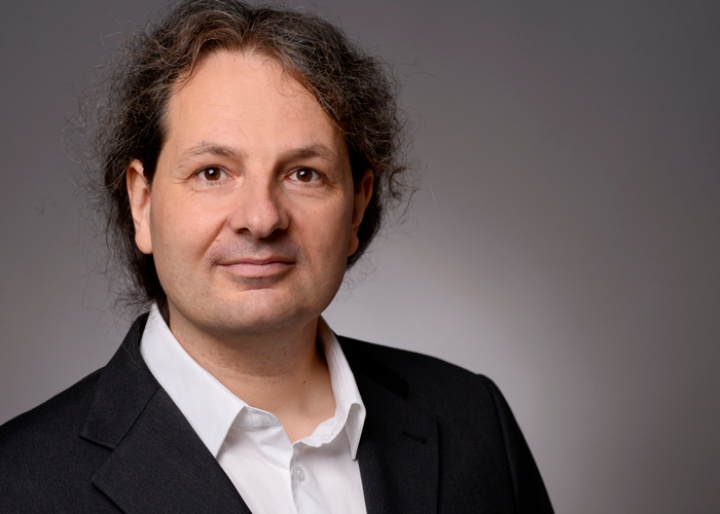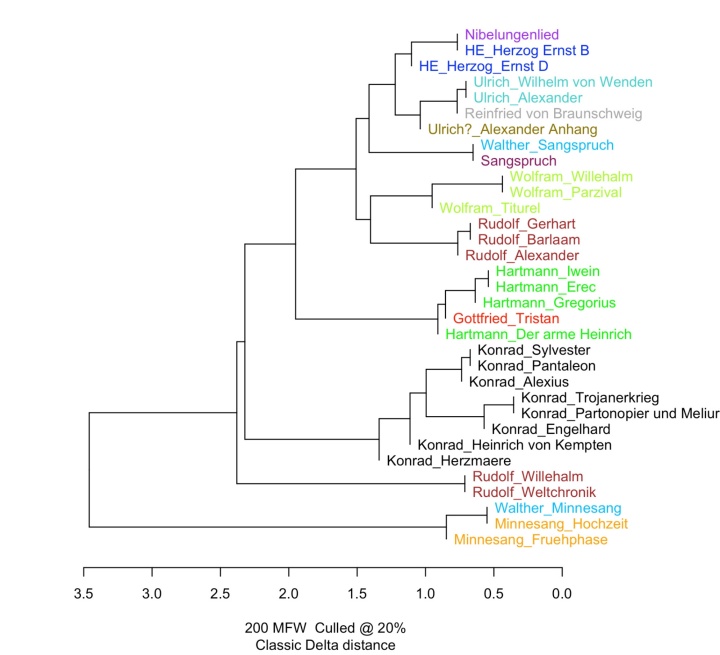Understanding literature with the computer – what appears a contradiction at first sight is a core concern of the Digital Humanities (in short DH). Professor Gabriel Viehhauser explains what we can discover with this. Since the spring of 2016 the native Austrian has been heading up the department of Digital Humanities at the Institute for Literary Studies and he is also responsible for the Master degree course bearing the same name.
There are actually 16 “Parzivals“. So many handwritten copies of the Middle High German verse novel by Wolfram von Eschenbach have been passed on to posterity. The original text in contrast is still missing to this day. For a long time philology therefore attempted to imply the original from the copies and so to speak reconstruct the “ideal” Parzival. A sobering undertaking as we know today: “Possibly the one Parzival never existed and there were always several versions of the material in circulation”, explained Gabriel Viehhauser. And they differ not only in the language but also in the content-related details.
Looking for different versions
Examining the various copies with a multi-perspective view as it is opened up through new digital text editions, such variations are uncovered and the way is paved for interesting subsequent analyses. “An example for this is the grail messenger Kundrie, a hybrid female creature with animal teeth and shaggy hair who is given increasingly negative features in various text groups depending on the lore“, explained Professor Viehhauser.
Possibly the one Parzival never existed and there were always several versions of the material in circulation.
Prof. Gabriel Viehhauser
The challenges here: in order to detect such developments, a huge amount of text corpora has to be explored. And this means: huge quantities of data. For Professor Viehhauser, who is researching in Basle and Berne on an edition of Parzival in electronic form subject to critical investigation and to the topic of which he also dedicated his doctorate, the work was then also the introduction to Digital Humanities. “With stylometric methods based on statistics it is possible to recognise the big picture in the abundance of complex information. With this humanities to a certain degree is given an empiric basis.” An obstacle for counting word frequencies is, however, the often very different orthography in medieval scripts. Therefore Professor Viehhauser has turned to modern contemporary texts. “In the framework of digital humanities it is possible to develop methods that can be applied to every text.“
The significance of the area
A further research topic of Professor Viehhauser is the significance of the area in narratology. “The areas in which a story takes place are often semantically charged”, he explained. “In the Arthur novel, for example, likewise one of the medieval text groups, the round table conveys values at court like civilization and order, is however a little static and ‘boring’. In contrast, when the young knight Erec rides into the forest ‘auf aventure‘, he changes to the world off the uncouth in which the problems and the confines of court culture are manifested and in which he can prove himself.
Many tales live from such changes in the spatial sphere. However, they are difficult to capture with conventional digital text analyses. A way forward here is computer linguistics. It enables an approach to certain area markers, to place names, for example, or terms such as mountain or house. The spatial structures in large text corpora can be derived from these markers with the help of rule-based procedures. “The theory is that action always takes place when people transcend the spatial sphere“, said Professor Viehhauser. Using the methods of digital humanities these can be ‘proven’ empirically and then the outliers could be investigated in a targeted way.
Hand in hand with hermeneutics
The fact that there are also by all means reservations against the “mathematization of the humanities” in one’s own guild is something Professor Viehhauser is aware of. “Some argue that quantitative methods do not do justice to the complexity of objects of humanities”. He himself also states: “Counting and measuring alone is not sufficient”. Therefore it is Professor Viehhauser’s aim to combine the quantification with qualitative methods of hermeneutics, intensive reflection and interpretation. "Then we will get a quite different direction of impact”.



